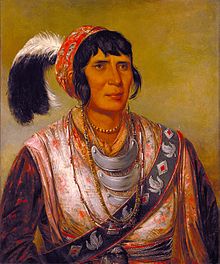Second Seminole War
| Second Seminole War | |||||||
|---|---|---|---|---|---|---|---|
| Part of the American Indian Wars | |||||||
 Osceola, Seminole leader. |
|||||||
|
|||||||
| Belligerents | |||||||
|
|
Seminole | ||||||
| Commanders and leaders | |||||||
|
Andrew Jackson Martin Van Buren William Henry Harrison Duncan Lamont Clinch Winfield Scott (1836) Richard Keith Call (1836) Thomas S. Jesup (1836-38) Zachary Taylor (1838-40) Walker Keith Armistead (1840-41) William Jenkins Worth (1841-42) |
Osceola John Horse Holata Mico (Billy Bowlegs) Ar-pi-uck-i (Sam Jones) Micanopy Coacoochee (Wild Cat) Halleck Tustenuggee Alligator |
||||||
| Strength | |||||||
| more than 9,000 in 1837 cumulative 10,169 regulars, 30,000 militia and volunteers | 900-1,400 warriors in 1835, less than 100 in 1842 | ||||||
| Casualties and losses | |||||||
| 1,600 military, unknown civilian | 3,000 | ||||||
The Second Seminole War, also known as the Florida War, was a conflict from 1835 to 1842 in Florida between various groups of Native Americans collectively known as Seminoles and the United States, part of a series of conflicts called the Seminole Wars. The Second Seminole War, often referred to as the Seminole War, is regarded as "the longest and most costly of the Indian conflicts of the United States."
Bands from various tribes in the southeastern United States had moved into the unoccupied lands in Florida in the 18th century. These included Alabamas, Choctaws, Yamasees, Yuchis and Creek people. The Creeks were the largest group, and included Lower Creeks and Upper Creeks, and both Hitchiti and Muscogee speakers. One group of Hitchiti speakers, the Mikasuki, settled around what is now Lake Miccosukee near Tallahassee. Another group of Hitchiti speakers settled around the Alachua Prairie in what is now Alachua County. The Spanish in St. Augustine began calling the Alachua Creeks Cimarrones, which roughly meant "wild ones" or "runaways", and which is the probable origin of "Seminole". This name was eventually also applied to the other groups in Florida, although the Native Americans still regarded themselves as members of different tribes. Other groups in Florida at the time of the Seminole Wars included "Spanish Indians", so called because it was believed that they were descended from Calusas, and "rancho Indians", persons of Native American ancestry, possibly both Calusa and Creek, and mixed Native American/Spanish ancestry, living at Spanish/Cuban fishing camps on the Florida coast.
...
Wikipedia
